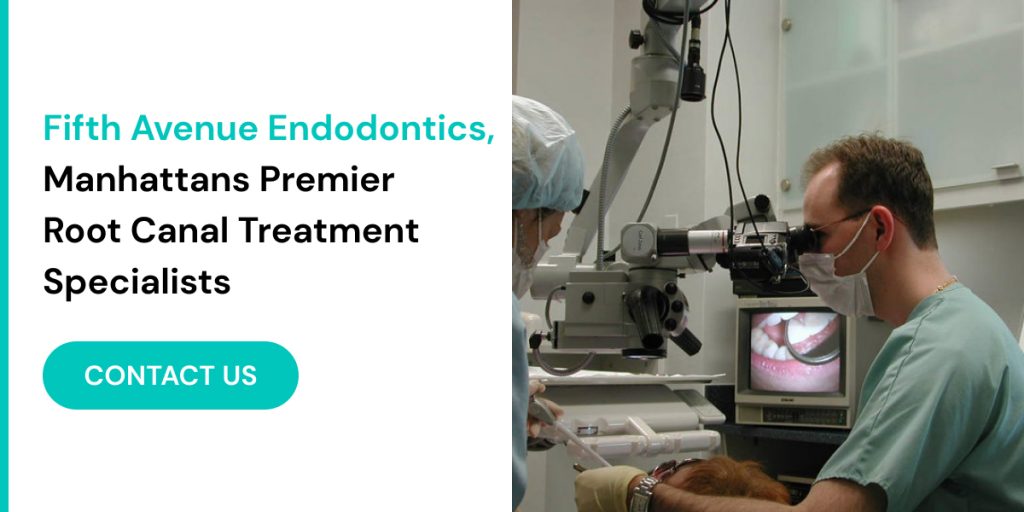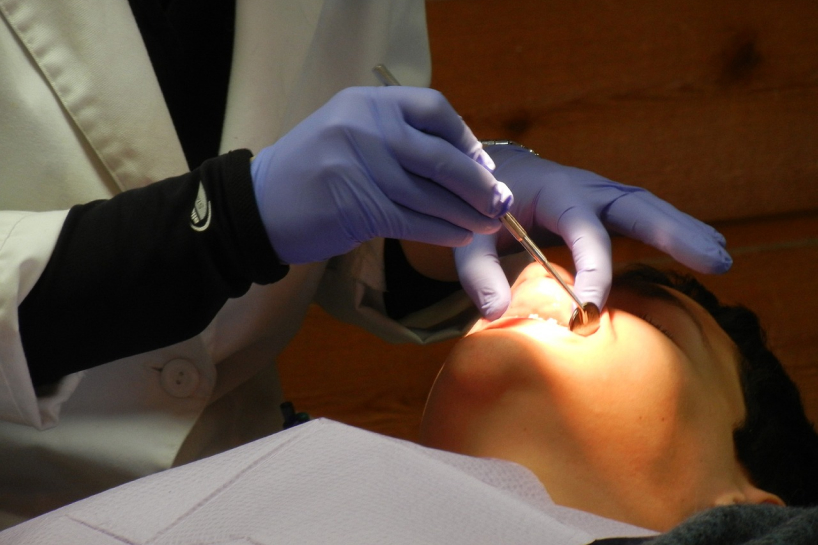When it comes to maintaining dental health, root canal treatments play a critical role in saving teeth that might otherwise be lost due to infection or decay. This procedure not only alleviates pain but also helps preserve the natural structure of your teeth, which is essential for overall oral health and functionality. Root canal treatments are often misunderstood, leading to unnecessary anxiety. However, they are highly effective in treating conditions that, if left unchecked, could result in more severe dental issues or even tooth loss.
For those seeking specialized care, understanding how endodontists manage intricate root canal systems can be enlightening. Endodontists are dentists with additional training focused on the diagnosis and treatment of diseases of the dental pulp and the tissues surrounding the roots of a tooth. They employ advanced techniques and state-of-the-art equipment to treat complex cases, ensuring the best possible outcomes for their patients.
In this blog post, we’ll delve into the complexities of root canal treatment in NYC, where cutting-edge technology and expert care converge. We’ll highlight the expertise of specialists like Dr. Iofin at Fifth Avenue Endodontics, who are dedicated to providing high-quality care tailored to each patient’s unique needs. Their skill in managing intricate root canal systems ensures that patients receive the most effective treatment, promoting long-term dental health and overall well-being.
The Intricacies of Root Canal Systems
A root canal system is not just a single, straightforward pathway but a complex network of tiny canals that can vary significantly from tooth to tooth. These canals house the pulp, a soft tissue consisting of nerves, blood vessels, and connective tissue. The pulp plays a crucial role in the development and health of the tooth, providing it with nutrients and sensory function. However, once the tooth has fully matured, it can survive without the pulp because it receives nourishment from surrounding tissues.
When this pulp becomes infected or inflamed due to deep decay, repeated dental procedures, or a crack or chip in the tooth, it can lead to severe pain and abscess formation. Infections in the pulp can result in intense discomfort, sensitivity to hot and cold, and swelling. If left untreated, the infection can spread beyond the tooth to the surrounding tissues, causing more severe health problems, including bone loss and systemic infections.
Endodontists are specially trained to navigate these intricate root canal systems, clean out the infected pulp, and seal the canals to prevent further infection. Their expertise is essential in managing the complexities of each unique root canal system. By understanding the structure and function of these tiny canals, endodontists can effectively treat infections and save teeth that might otherwise be lost, ensuring patients maintain their natural smiles and optimal oral health.
Identifying Complex Root Canal Systems
Endodontists, who are specialists in root canal treatment, are trained to identify and treat complex root canal systems. The complexity can arise from several factors that make the treatment more challenging but also highlight the expertise required to achieve successful outcomes.
Multiple Canals
One of the primary factors contributing to complexity is the presence of multiple canals within a single tooth. This is especially common in molars, which can have three or more canals. Each canal must be meticulously cleaned, shaped, and sealed to ensure that all infected tissue is removed and the space is properly filled. Missing even a small canal can result in persistent infection or failure of the treatment. This meticulous process demands a high level of precision and attention to detail, which is why endodontists undergo extensive training.
Calcified Canals
Over time, canals can become calcified or blocked due to the natural aging process, trauma, or long-standing infections. Calcified canals pose a significant challenge because they are difficult to locate and navigate. The hard, mineralized tissue can obscure the pathways that need to be treated. Advanced tools and techniques, such as ultrasonic instruments and high-powered microscopes, are often required to effectively manage these cases. Dr. Iofin and his team at Fifth Avenue Endodontics are skilled in using these technologies to carefully remove calcifications and treat the affected areas.
Curved Canals
Another complexity arises from the natural curvature of many root canals. Unlike the straight canals depicted in basic diagrams, real-life root canals often twist and turn within the tooth. These curves can complicate the cleaning and filling processes, as it becomes difficult to reach all areas of the canal with traditional instruments. Curved canals require specialized equipment and techniques to navigate effectively. Endodontists must be adept at using flexible files and other tools that can bend and maneuver through the canal’s twists and turns.
Advanced Imaging Techniques
To address these complexities, Dr. Iofin and his team at Fifth Avenue Endodontics utilize advanced imaging techniques such as 3D cone beam computed tomography (CBCT). CBCT provides highly detailed, three-dimensional images of the tooth’s internal structures, allowing endodontists to visualize the entire canal system accurately. This technology is invaluable in planning and executing treatment strategies for complex root canal systems. By providing a clear view of the canals, CBCT helps in identifying hidden canals, assessing the extent of calcifications, and mapping out curved pathways. This comprehensive visualization ensures that every part of the canal system is thoroughly treated.
Personalized Treatment Plans
Each patient’s dental anatomy is unique, and so is their root canal system. Personalized treatment plans are essential for addressing the specific challenges presented by each case. Dr. Iofin’s approach at Fifth Avenue Endodontics involves a thorough initial assessment using CBCT imaging, followed by a tailored treatment plan that addresses the individual complexities of the patient’s tooth. This personalized care ensures that all aspects of the root canal system are considered and treated effectively.
Expertise and Experience
The expertise and experience of the endodontist play a crucial role in managing complex root canal systems. Dr. Iofin and his team have years of specialized training and practical experience, which equip them to handle even the most challenging cases. Their ability to combine advanced technology with skilled techniques ensures that patients receive the highest standard of care.
In summary, the identification and treatment of complex root canal systems require specialized knowledge, advanced imaging techniques, and a meticulous approach. Endodontists like Dr. Iofin at Fifth Avenue Endodontics are trained to navigate these challenges, providing effective and successful root canal treatments that preserve dental health and enhance patient outcomes.

Advanced Techniques in Root Canal Treatment
The success of root canal treatment in NYC hinges on the utilization of advanced techniques and technologies. These innovations enable endodontists to manage the intricate and challenging aspects of root canal systems with greater precision and efficacy. Here’s how endodontists handle the challenges posed by complex root canal systems:
Microscopic Endodontics
One of the most significant advancements in endodontics is the use of dental operating microscopes. These microscopes provide high magnification and superior illumination of the root canal system, which is crucial for identifying and treating all the canals within a tooth. The enhanced visibility offered by microscopic endodontics allows endodontists to see the smallest details that are invisible to the naked eye or traditional dental loupes. This includes tiny accessory canals, hairline fractures, and other intricate structures within the tooth.
With the aid of a microscope, endodontists can perform more precise and thorough cleaning and shaping of the root canals. The ability to visualize the entire canal system ensures that no infected tissue is left behind, reducing the risk of post-treatment complications. Furthermore, the detailed view provided by the microscope aids in the accurate placement of the filling material, ensuring a tight seal that prevents future infections.
Ultrasonic Instruments
Ultrasonic instruments have revolutionized the way endodontists clean and shape root canals. These instruments operate at high frequencies, generating ultrasonic waves that create vibrations capable of breaking down and removing obstructions within the canals. This includes calcifications, old filling materials, and other debris that can hinder the cleaning process.
The use of ultrasonic instruments offers several advantages. First, their high-frequency vibrations allow for delicate and precise cleaning, minimizing the risk of damaging the surrounding tooth structure. This is particularly important when dealing with calcified canals, where traditional mechanical instruments might not be effective or could cause unintended harm. Additionally, ultrasonic instruments can reach areas that are otherwise inaccessible, ensuring a more comprehensive cleaning of the entire canal system.
Rotary Instrumentation
Rotary instrumentation involves the use of electrically powered, flexible nickel-titanium (NiTi) files that rotate within the root canal. These files are more efficient and effective than manual files, allowing endodontists to clean and shape canals more quickly and uniformly. The flexibility of NiTi files is particularly beneficial for navigating curved canals, reducing the risk of procedural errors such as ledging, perforation, or transportation of the canal.
Cone Beam Computed Tomography (CBCT)
As previously mentioned, CBCT is an advanced imaging technology that provides three-dimensional views of the tooth and surrounding structures. This technology is invaluable for diagnosing complex cases, planning treatments, and ensuring that all canals are located and treated. CBCT allows for a detailed assessment of the root canal anatomy, identifying any unusual or hidden canals that might not be visible with traditional two-dimensional X-rays. This comprehensive imaging helps in devising precise treatment plans, ultimately leading to better patient outcomes.
Laser-Assisted Endodontics
Laser-assisted endodontics is an emerging technique that uses laser technology to enhance the cleaning and disinfection of root canals. Lasers can effectively eliminate bacteria and organic debris from the canal system, ensuring a higher level of cleanliness than traditional methods. The laser’s energy also promotes better sealing of the canal, reducing the likelihood of future infections.
Bioceramic Materials
The use of bioceramic materials in root canal treatment has gained popularity due to their excellent sealing properties and biocompatibility. These materials are used to fill and seal the cleaned canals, preventing bacteria from re-entering and causing reinfection. Bioceramic materials bond well with the natural tooth structure, providing a durable and long-lasting seal that supports the overall success of the treatment.
Digital Workflow and Computer-Aided Design (CAD)
Digital workflow and CAD technologies are transforming endodontic practice by streamlining the planning and execution of treatments. These technologies allow for precise digital impressions, accurate planning of access cavities, and the creation of custom guides for complex procedures. The integration of digital tools enhances the efficiency and accuracy of root canal treatments, ensuring optimal outcomes for patients.
The success of root canal treatment in NYC is greatly enhanced by the utilization of advanced techniques and technologies. Endodontists like Dr. Iofin at Fifth Avenue Endodontics employ these innovative approaches to manage complex root canal systems effectively, providing patients with high-quality care and improved dental health outcomes. Through microscopic endodontics, ultrasonic instruments, rotary instrumentation, CBCT, laser-assisted endodontics, bioceramic materials, and digital workflows, endodontists are equipped to handle even the most challenging cases with precision and confidence.
Case Study: Managing a Complex Root Canal
Consider a scenario where a patient presents with severe pain in a molar, a tooth typically known for its complex root canal system. An initial X-ray might reveal multiple canals, some of which appear to be calcified.
Step-by-Step Approach:
- Diagnosis and Imaging: Using CBCT, the endodontist maps out the entire canal system, identifying any hidden or curved canals.
- Access Preparation: The tooth is carefully accessed to expose the pulp chamber. The use of microscopes ensures that even the smallest canals are located.
- Cleaning and Shaping: Ultrasonic instruments and specialized files are used to clean and shape each canal meticulously.
- Disinfection: The canals are thoroughly disinfected to eliminate any lingering bacteria.
- Sealing: Each canal is sealed with a biocompatible material to prevent future infection.
- Restoration: The tooth is then restored with a filling or crown to ensure full functionality.

Preventing Complications in Root Canal Treatment
Preventing complications in root canal treatment requires meticulous attention to detail and a thorough understanding of dental anatomy. Here are some strategies employed by experts at Fifth Avenue Endodontics:
- Detailed Case Assessment: Each case is unique, and a thorough assessment is essential for identifying potential complications early.
- Use of Technology: Advanced imaging and instrumentation help in accurately diagnosing and treating complex cases.
- Patient Education: Educating patients about post-treatment care can prevent future complications and ensure long-term success.
Post-Treatment Care and Follow-Up
After a complex root canal treatment, proper post-treatment care is crucial. Patients are advised to follow a few guidelines to promote healing and maintain oral health:
- Maintain Oral Hygiene: Regular brushing and flossing are essential to keep the treated tooth and surrounding gums healthy.
- Avoid Hard Foods: To prevent damage to the treated tooth, patients should avoid chewing on hard foods immediately after the procedure.
- Regular Check-Ups: Scheduled follow-up visits allow the endodontist to monitor the healing process and address any issues promptly.
The Expertise of Fifth Avenue Endodontics
At Fifth Avenue Endodontics, patients benefit from the extensive experience and advanced skills of specialists like Dr. Iofin. The practice is renowned for its commitment to excellence in endodontic care, particularly in managing complex root canal systems. By leveraging state-of-the-art technology and evidence-based techniques, Dr. Iofin ensures that each patient receives personalized and effective treatment.
Conclusion: The Importance of Specialized Care
Root canal treatment in NYC, especially for complex cases, demands a high level of expertise and precision. Endodontists like Dr. Iofin at Fifth Avenue Endodontics are equipped with the knowledge and tools to handle even the most challenging root canal systems, ensuring that patients can preserve their natural teeth and maintain optimal oral health. By understanding the intricacies of these treatments, patients can appreciate the value of specialized care and the dedication of their endodontic team.

